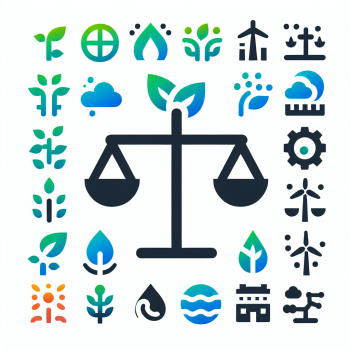Frequent readers of this blog know that many of my posts are long because I get bogged down documenting my statements. This is because of my background in industry where it is necessary to prove my arguments to have credibility. One disadvantage of that is that many articles that get my attention are not mentioned here because of a lack of time. I tried to address that with a fortnightly update on those articles but am going to try an experiment where I add a little commentary to articles that are of interest on a more frequent basis.
I have been following the Climate Leadership & Community Protection Act (Climate Act) since it was first proposed and most of the articles described below are related to the net-zero transition. I have devoted a lot of time to the Climate Act because I believe the ambitions for a zero-emissions economy embodied in the Climate Act outstrip available renewable technology such that the net-zero transition will do more harm than good. The opinions expressed in this article do not reflect the position of any of my previous employers or any other company I have been associated with, these comments are mine alone.
Physical Restraints to the Transition
In the Climate Act and elsewhere the strategy is to electrify everything possible. Many practical issues are overlooked by transition proponents such as the enormous requirements for copper necessary for electric infrastructure to replace fossil fuels. Substack Penguin Empire Reports explains that “A renewables grid is far more ‘copper hungry’ than a fossil fuel/ nuclear grid for two reasons: The ‘greener the grid,’ the more generators you’ll probably need to produce the same amount of electricity (on average) …multiplied by…. Each renewable generator needs more copper per unit than fossil fuel generators.”
Irinia Slav addresses the copper shortage situation. Copper prices have gone up because demand is greater than supply. Why aren’t miner rushing to mine more? Slav describes the “monumental wall of reasons for miners to not be looking for copper growth opportunities and that wall is standing right in the way of trillions in transition investments planned, hoped for, and cherished by politicians, activists and Fatih Birol.”
The Climate Act Scoping Plan cost estimates assume that implementation costs will go down in the future but given the scarcity of the raw materials necessary for the transition is that an appropriate assumption?
Have We Reached Peak Green?
Tom Shepstone highlights German media editorial in Tichys Einblick about the recent European election and the tilt to the right:
Prosperity issues can only be sold to people who can afford a heat pump or an ecological package. For most young people, however, it is clear: they will not retire at 70, they will not buy a house, and they may not be able to support a family – and if they do, their children will grow up in problem areas, in rural wasteland or in an environment of left-wing indoctrination.
Lazard’s Levelized Cost of Energy Estimates
The most common reference for claims that new renewable wind and solar facilities are cheaper than natural gas generators is Lazard’s Levelized Cost of Energy Estimates. Isaac Orr and Mitch Rolling explain why those claims cook the books.
What Am I Missing Here?
PV magazine notes that New York invests $5 million in agrivoltaics. They note:
The New York State Energy Research and Development Authority (NYSERDA) announced that $5 million is now available for demonstration projects that co-locate solar and agriculture within the state. Each project can receive up to $750,000. The state aims to expand the body of knowledge on the technical and financial viability of solar agrivoltaic facilities.
Sounds good because the Hochul Administration has still not mandated that utility-scale solar developers meet the NYS Department of Agriculture & Markets (NYSDAM) prime farmland guideline: “The Department’s goal is for projects to limit the conversion of agricultural areas within the Project Areas, to no more than 10% of soils classified by the Department’s NYS Agricultural Land Classification mineral soil groups 1-4, generally Prime Farmland soils, which represent the State’s most productive farmland.”
Here is what I do not understand:
According to NYSERDA summary documentation, eligible crops, livestock, and livestock products include, but are not limited to:
- Field crops, including corn, wheat, oats, rye, barley, hay, potatoes and dry beans.
- Fruits, such as apples, peaches, grapes, cherries and berries.
- Vegetables, such as tomatoes, snap beans, cabbage, carrots, beets and onions.
- Horticultural specialties, including nursery stock, ornamental shrubs, ornamental trees, and flowers.
- Livestock and livestock products, including cattle, sheep, hogs, goats, horses, poultry, ratites (such as ostriches, emus, rheas and kiwis), farmed deer, farmed buffalo, fur bearing animals, wool bearing animals (such as alpacas and llamas), milk, eggs, and furs.
- Maple sap.
- Christmas trees derived from a managed Christmas tree operation whether dug for transplanting or cut from the stump.
- Aquaculture products, including fish, fish products, water plants and shellfish.
- Woody biomass, which means short rotation woody crops raised for bioenergy, and does not include farm woodland.
- Apiary products, including honey, beeswax, royal jelly, bee pollen, propolis, package bees, nucs and queens. “Nucs” are defined as small honeybee colonies created from larger colonies, including the nuc box – a smaller version of a beehive, designed to hold up to five frames from an existing colony.
- Actively managed log-grown woodland mushrooms.
- Industrial hemp as defined in Section 505.
Eligible crops include apples, peaches, cherries, maple trees, and Christmas trees? Trees will shade solar panels. So, this approach is inconsistent with my understanding that the intent of agrivoltaics was to use the farmland within the solar panels to try to make up for the loss of the productive farmland. The intent of the NYSDAM guideline won’t be addressed either. So what am I missing?

